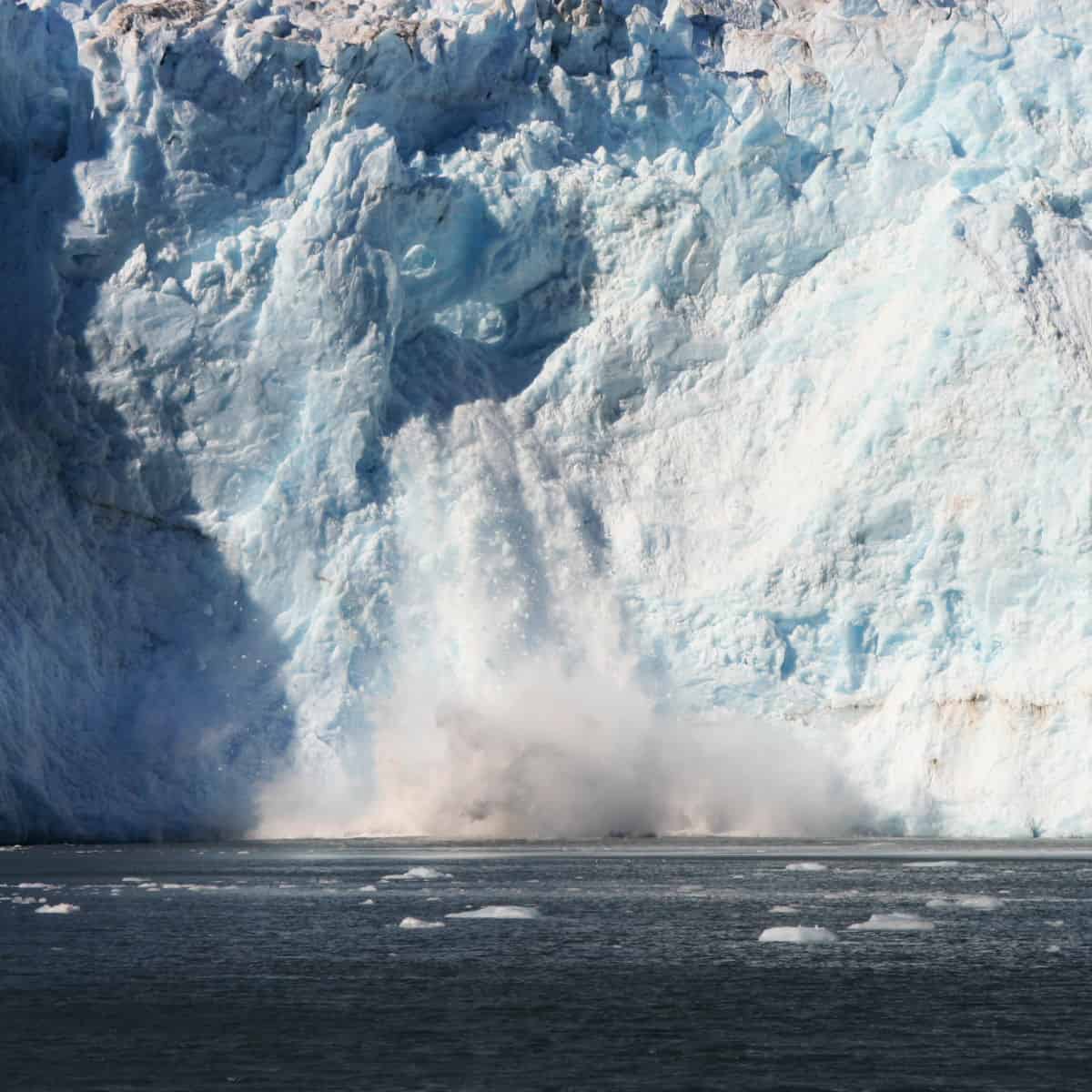Alaska National Parks are a must-see for any National Park fan! There is just something about Alaska and the wild beauty of this gorgeous state. National Parks in Alaska include Denali National Park, Katmai National Park, and so many other gorgeous parks.
One of the best things about Alaska National Parks is how big they are and the opportunities they provide to see amazing wildlife and scenery. From seeing the bears of Katmai to the big 5 in Denali there is something amazing to see in each park.
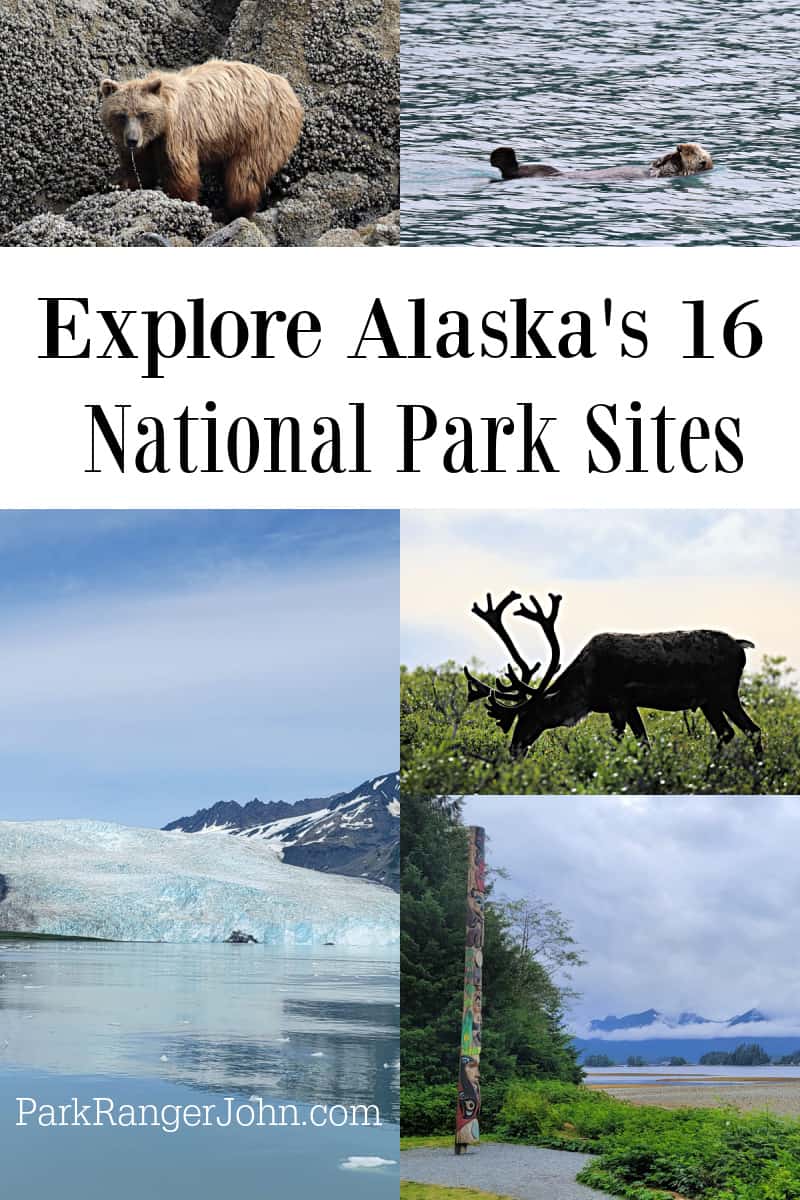
Alaska National Parks
If you have been wondering how many National Parks in Alaska you can visit we have the answer for you!
Alaska is a land of rugged beauty and full of wilderness areas. The United States has set aside many acres of land as Alaska national parks to preserve the state's unique environments and natural splendor.
All of these national and state parks are havens for outdoor enthusiasts, and you will have no shortage of healthful outdoor activities, wildlife viewing, spectacular views, untouched wilderness and natural beauty to fill your trip.
The best time to come is in the summer, when temperatures are mild, snow fall briefly ceases or decreases, and all parks and services are open. Travel to many Alaskan parks in other seasons can be difficult or impossible.
Alagnak Wild River
Top Things to do - wildlife viewing, fishing, hunting, boating, camping and stargazing
Lodging - Many lodging opportunities exist in and around Alagnak River. These Lodges are independent businesses operating on private land
Camping- primitive camping along the river only
Park Address - 1000 Silver St., Bldg. 603, PO Box 7, King Salmon 99613
Experience the best of Alagnak Wild River by fishing for salmon, watching bears and eagles, and embarking on river adventures by kayak or raft. Capture stunning photos of landscapes and wildlife, explore diverse ecosystems on hikes, and enjoy camping under the stars.
Learn about the area's geology and history from guides, and take in the incredible night sky. Remember to plan ahead and check with official sources for current information and safety guidelines before enjoying these activities in this remote and breathtaking wilderness.
The Alagnak Wild River is a stunning area in southwest Alaska, part of Katmai National Park. It's known for its wilderness, beautiful landscapes, and great fishing. People come here to fish for salmon like sockeye, chinook, and coho.
You can also see bears, eagles, and moose. Whether you want a calm float or an exciting whitewater adventure, the Alagnak River offers a chance to experience Alaska's amazing nature.
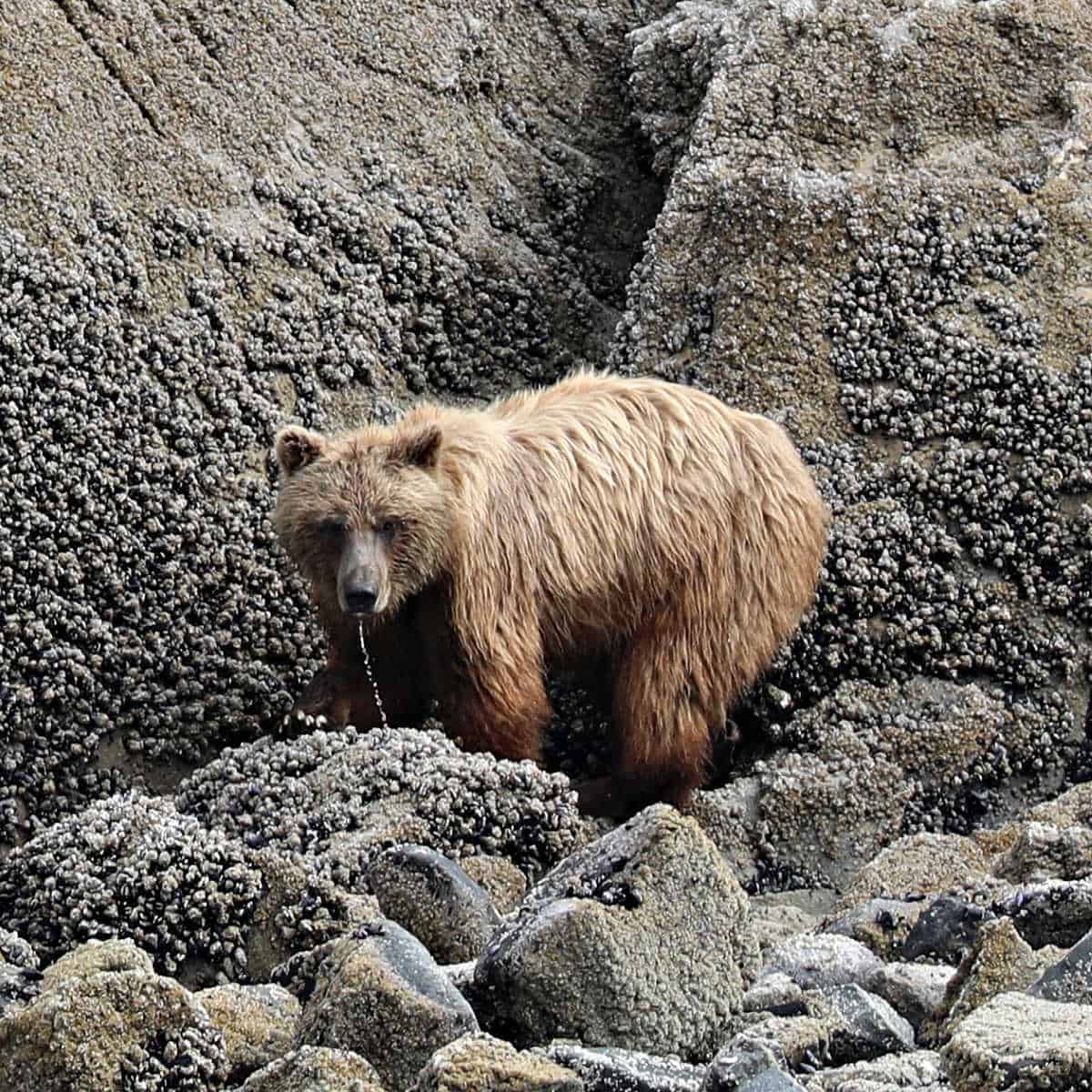
Aniakchak National Monument & Preserve
Top Things to do - fishing, hunting, camping, hiking, rafting/paddling and stargazing
Lodging - There is no lodging within Aniakchak National Monument & Preserve
Camping- all camping is primitive
Park Address - 1000 Silver St., Bldg. 603, PO Box 7, King Salmon 99613
Aniakchak National Monument & Preserve is a special place in the remote Alaska Peninsula known for its volcanic crater called Aniakchak Caldera. It's a bit hard to reach, mainly by plane, but offers a real wilderness adventure. You can hike around lava flows and tundra, and there's Surprise Lake inside the caldera. The Aniakchak River is for experienced paddlers and lets you see the area's beauty. This place is rugged and wild, perfect for nature lovers looking for a unique and untouched spot.
Experience Aniakchak National Monument & Preserve by hiking lava flows and tundra, paddling the Aniakchak River, and spotting bears and eagles. Enjoy the beauty of Surprise Lake in the caldera and the solitude of this wild place. Remember to plan ahead, stay safe, and check for the latest info before exploring this unique environment.
Bering Land Bridge National Preserve
Top Things to do - wildlife viewing, berry picking, hunting, fishing, hiking and backpacking, snowmobiling,
Lodging - There is no lodging within Bering Land Bridge NP
Camping - The preserve provides backcountry camping options, allowing you to experience the untouched landscapes while being mindful of Leave No Trace principles. Check with park authorities or official sources for any specific regulations or permits required for camping.
Park Address - 214 Front Street, Sitnasuak Building, Nome, AK 99762
Bering Land Bridge National Preserve is a fascinating and remote protected area located in western Alaska, preserving the remnants of the land bridge that once connected North America with Asia during the last Ice Age.
The preserve showcases a diverse range of ecosystems, from coastal plains to boreal forests and tundra landscapes. Visitors can explore archaeological sites, witness unique geological formations, and experience the traditional cultures of indigenous communities.
The preserve is home to abundant wildlife, including caribou, musk oxen, and various bird species. Outdoor activities such as hiking, birdwatching, and photography allow visitors to immerse themselves in the striking scenery and rich history of this remote region.
Cape Krusenstern National Monument
Top Things to do - Kayaking, fishing, camping, hiking, backpacking, wildlife watching, and photo opportunities abound in the summer.
Lodging - There is no lodging within the NM
Camping - There are also no designated campsites, and visitors must choose their own place to camp.
Park Address - 171 3rd Ave, Kotzebue, AK 99752
Cape Krusenstern National Monument, located on the northwest coast of Alaska, covers around 584,000 acres and is managed by the National Park Service. It offers a unique opportunity to explore the region's rich cultural and natural history.
The monument is known for its well-preserved archaeological sites that showcase over 5,000 years of human history, including ancient tools, hunting implements, and remnants of traditional structures. Visitors can also discover the remains of ancient Thule Eskimo settlements and gain insights into the Thule Eskimo culture.
Outdoor enthusiasts can enjoy activities like hiking, camping, birdwatching, beachcombing, and fishing in the varied landscapes of coastal areas, tundra, and lakes. The monument is home to diverse wildlife species, including caribou, moose, foxes, musk oxs, and migratory birds.
A visitor center provides information and guidance, while visitors should be prepared for challenging weather conditions and limited facilities.
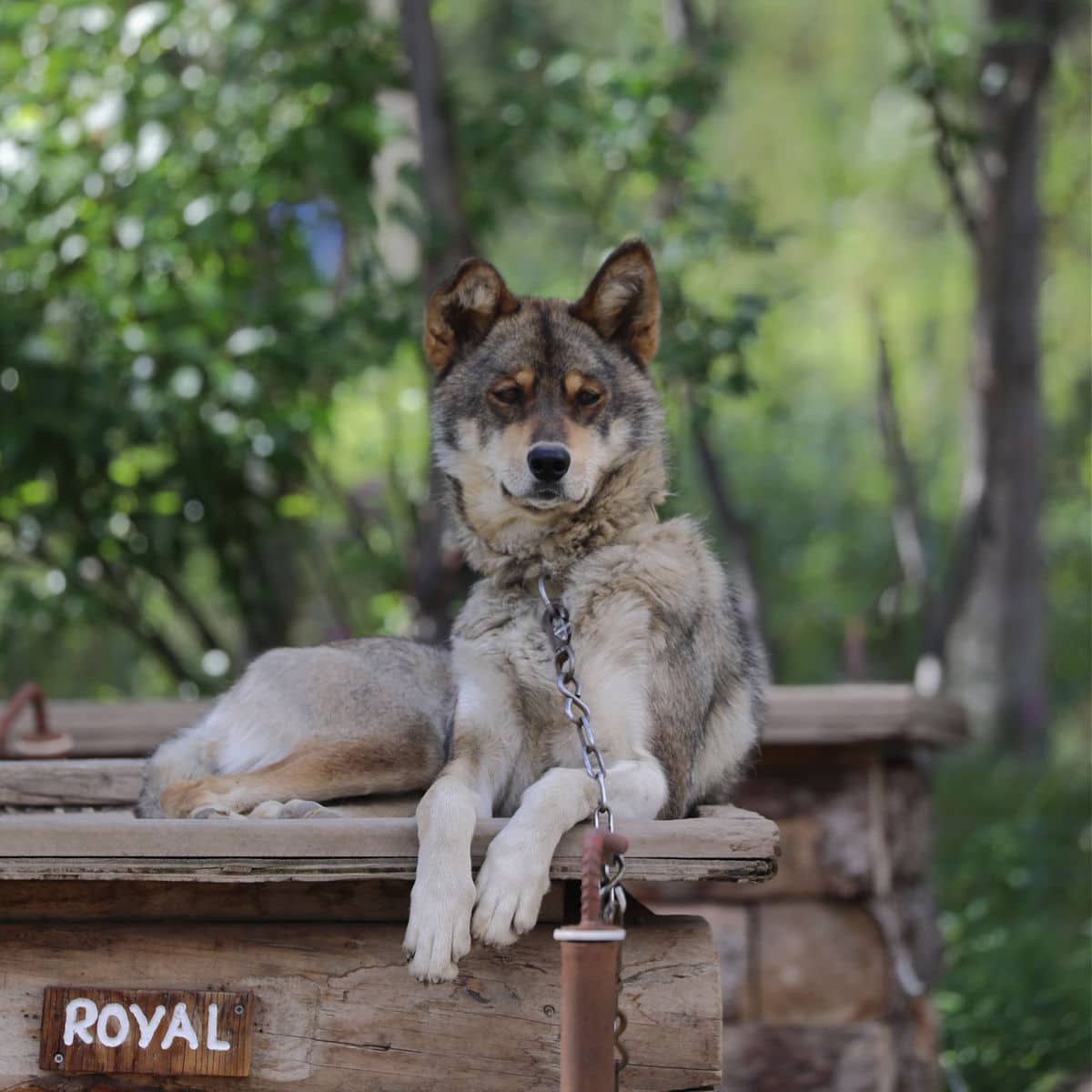
Denali National Park & Preserve
Top Things to do - Flightseeing, hiking, rafting and kayaking, camping, sled dog demonstrations and wildlife viewing
Lodging - There are no National Park Service (NPS) operated accommodations in Denali other than campgrounds. There are some lodgings located within the boundaries of the park, but they sit on privately owned land
Camping- Camping in Denali offers a great way to experience this spectacular park. Whether you wish to tent-camp, or camp with an RV or other vehicle, one or more of the park campgrounds should suit your interests. Please note that vehicles can only camp in established, open campgrounds in the park - not along pullouts or the side of the road.
Park Address -Mile 237 Highway 3, Denali Park, AK 99755
Denali National Park, in central Alaska, is home to Mt. McKinley (or Denali), North America's tallest mountain. You can raft on the park's waterways and also hike, bike, fish, and view the abundant wildlife.
Experienced hikers can tackle the challenge of Mt. McKinley and it's highest peaks, with advance permission from the park. The park is just under 250 miles from Anchorage, and there is one car entrance to the park, along Route 3.
In summer, bus service is common to this remote location; you can also take one of the state-owned railroad's trains to the entrance.
In winter temperatures regularly dip as low as -40, but there are still activities like dog sledding, snowshoeing, and cross-country skiing.
Summers sometimes see 75 degree weather--and a rare snowfall. Lodging is scarce in the park, but nearby communities of Cantwell and Healy have hotels.
Gates of the Arctic National Park & Preserve
Top Things to do -backpacking, climbing, wildlife viewing, birding, fishing and hunting
Lodging - There is no lodging within the NPP
Camping- There are no designated campsites in Gates of the Arctic National Park and Preserve. Camping usually takes place in conjunction with other recreational activities.
Park Address - 101 Dunkel St, Fairbanks, AK 99701
Gates of the Arctic National Park is the state's northernmost park, inside the Arctic Circle, and certainly one of its least developed. You'll love this destination if you cherish solitude, striking out on your own, and unspoiled natural vistas of mountains, rivers, and valleys.
Camping, bird- and wildlife watching and backpacking are all available in this rugged landscape, but keep in mind that you'll be making your own paths as you hike, so bring a compass and map.
In the winter temperatures in the park can dip as low as -40 degrees. In summer days rarely get above 70, and nights can still dip below freezing.
Snow can fall any month of the year, so you should be prepared for travel delays. The only way into the park is by air, but the nearby towns of Anaktuvuk Pass, Bettles, and Coldfoot have air taxi services. These towns also have the only area lodging.
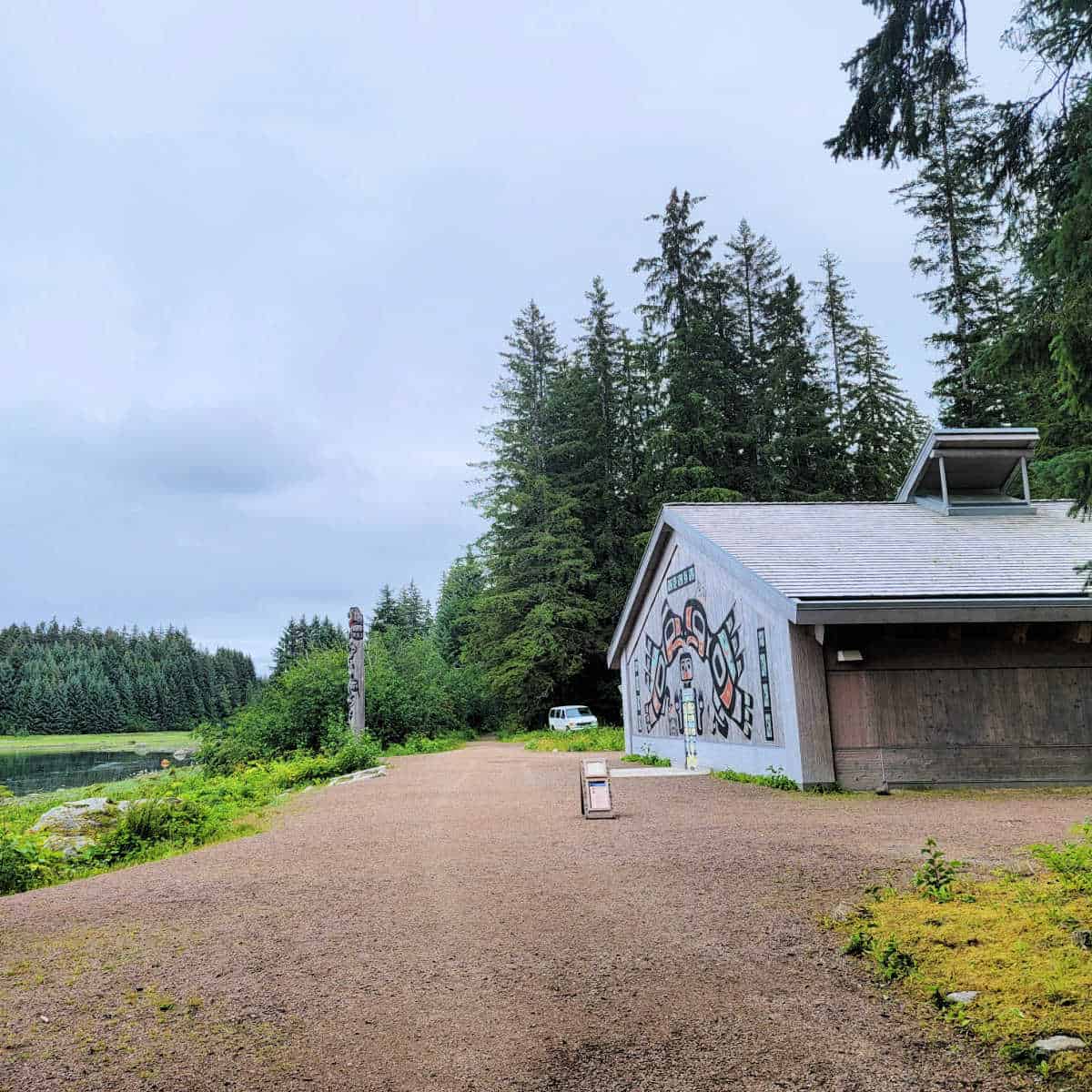
Glacier Bay National Park & Preserve
Top Things to do - Explore Bartlett Cove , Glacier Bay By Boat, Wilderness Adventures, birdwatching, camping, fishing
Lodging - The Glacier Bay Lodge offers rooms, a restaurant, fabulous wilderness views, a daily tour boat, fishing, kayaking, hiking, and fuel sales.
Camping- The National Park Service maintains a free walk-in campground in Bartlett Cove, located in a scenic rainforest setting along the shore, ¼ mile south of the Bartlett Cove dock. The campground features bear-proof food storage caches, composting toilets, a fire pit on the beach, and a small warming shelter. Firewood is provided.
Park Address -1 Park Road, Gustavus, AK 99826
Glacier Bay National Park in Alaska boasts snow-capped mountain ranges, fjords, glaciers and freshwater streams.
Located 60 air miles west of Juneau in southeast Alaska, nature did not make it easy to reach. No roads lead to Glacier Bay, and visitors can gain access only by boat or small plane.
Most people arrive by cruise ship or through the only airport in the area at the tiny town of Gustavus, the "Gateway to Glacier Bay National Park".
The summer months see the population of Gustavus burgeon tenfold as thousands of visitors arrive to take in the breathtaking scenery and delve into Alaska's history and geological past.
Glacier Bay National Park and Preserve is headquartered in Bartlett Cove, ten miles by paved road from Gustavus. Bartlett Cove hosts the large commercial Glacier Bay Lodge, restaurant and bar, a walk-in only campground and hiking trails.
A 40-mile day-cruise to the glaciers leaves from here in the summer. Glacier Bay National Park encompasses over 3 million acres of dramatic scenery and wildlife and 11 tidewater glaciers, which can be experienced on the myriad boat or air tours that service the park.
Katmai National Park & Preserve
Top Things to do - Backcountry Hiking and Camping, Bear Watching, Boating, Flightseeing, fishing, Hunting and Trapping
Lodging - Katmailand, Inc. is the only National Park Service authorized concessioner in Katmai offering overnight accommodations and food and beverage service based at Brooks Lodge and Grosvenor Lodge.
Katmailand, Inc. also offers guided sport fishing, gifts and merchandise, outdoor recreation equipment rental, public showers, ground transportation and sightseeing, and camper drop-off services.
Camping- The Brooks Camp Campground sits among a forest of mature balsam poplar and birch trees on the shore of Naknek Lake. The campground’s location, facilities, and wildlife viewing opportunities make it one of the most unique campgrounds in North America.
Park Address - 1000 Silver Street, Building 603, King Salmon 99613
The Katmai National Park and Preserve is another place that you and the group that you are traveling with will enjoy yourselves.
Whether you are looking for adventure or just a relaxing time, this site will allow you to do and see a lot. Make sure that you get weather and road condition updates so that you can be prepared when you are visiting.
This site is open all year round for your convenience. You will not have to pay a fee to visit this park. You will have to pay a park entrance fee if you are planning to go backcountry camping in the area.
Always come well-prepared with all of the supplies that you will need for your entire group. You will want to make sure that you have suntan lotion and bug spray along for the time that you will be staying.
There are great brown bear viewing times of the year when visiting this site. The months of July and September are the best times to view them. Be sure that you have your binoculars and your camera with you so that you can watch them.
Many people enjoy this pastime, so be sure that you consider going during those months of the year and see if you will see any bears when you are there. You are surely in for a fantastic time when you are staying at the site for several days.
You will want to make sure that you follow the rules and regulations of the park and that you clean up before you leave. With good preparation, you will have a great time at this site.
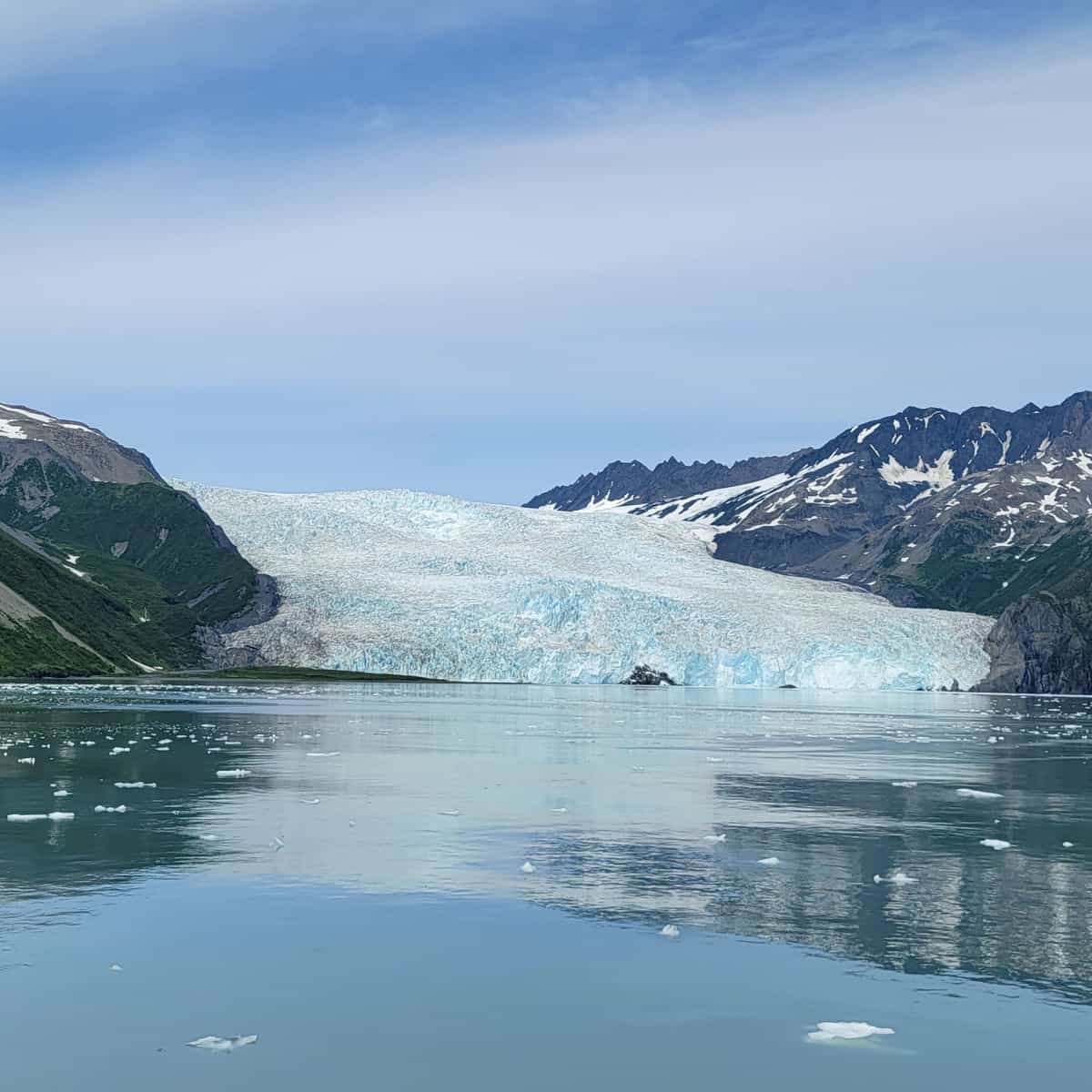
Top Things to do - boat tours, hiking, flightseeing, mountaineering, winter activities
Lodging - Two coastal public use cabins are available on the Kenai Fjords coast during the summer months (generally Memorial Day to Labor Day).
The Willow public use cabin may be reserved during the winter (typically mid November - mid April). Reservations are required and can be made by calling 907-422-0500.
Camping- Exit Glacier has a 12-site, walk-in, tent-campground. Sites are available on a first-come, first-served basis.
Park Address - 1212 4th Avenue, Seward, AK 99664, United States
Kenai Fjords National Park, along the Gulf of Alaska coast, is filled with otherworldly beauty, thanks to its fjords and glaciers.
Paddle amid the ice-filled waterways, hike, fish, or test your mountaineering mettle in the Harding Icefield. Park Ranger-led guided hikes explore some of the park's most interesting attractions.
The town of Seward, Alaska, is just outside the park's borders, and it is much easier to get around by car in Kenai than other parks in the state.
Seward also has a number of hotels, or you can stay in the park at the Kenai Fjords Glacier Lodge. Weather varies a great deal in the park--a summer day can see highs in the 40s or the 70s whereas in winter temperatures may be above freezing or -20 degrees.
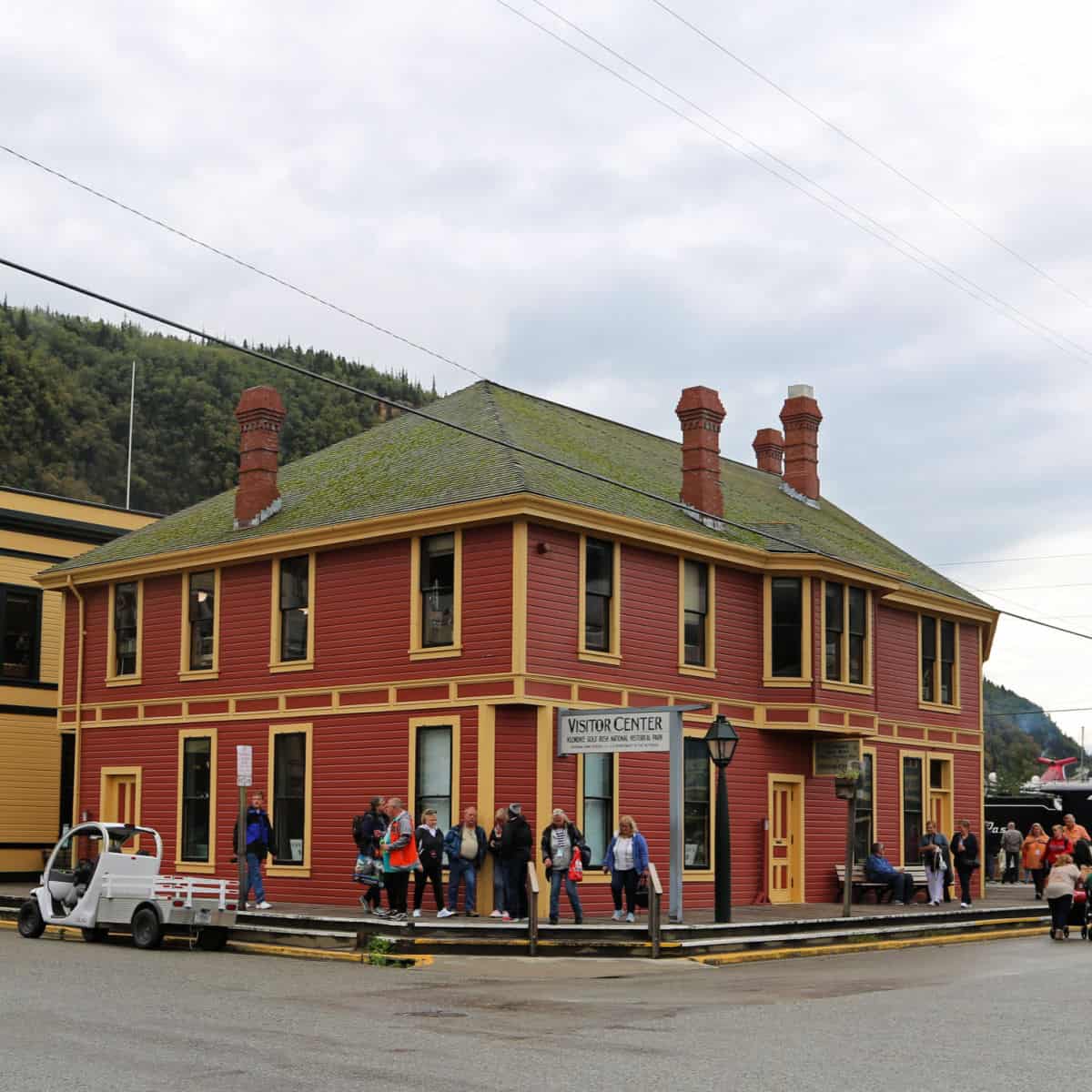
Klondike Gold Rush National Historical Park (also Washington)
Top Things to do - Hiking, museum exhibits, self guided tours
Lodging - The Klondike Gold Rush National Historical Park itself does not offer lodging within the park boundaries. However, the town of Skagway, where much of the park is located, provides various lodging options for visitors.
Camping- The Dyea Campground is located 9 miles from Skagway and .5 miles from the Chilkoot trailhead. The campground provides 22 sites for vehicle and walk-in camping.
Park Address - 291 Broadway, Skagway 99840
The Klondike Gold Rush National Historical Park in Skagway, Alaska, preserves the history of the 19th-century Klondike Gold Rush, when thousands sought gold in the Yukon region.
The park showcases the town's role as a gateway to the goldfields, with preserved buildings, trails, and artifacts. It offers visitor centers, ranger-led programs, and hikes that share the challenges and experiences of prospectors.
Skagway's historic buildings, like saloons and hotels from the era, provide insights into daily life. The park captures the adventurous spirit of the gold rush and its impact on the region's development.
Kobuk Valley National Park
Top Things to do - boating/floating, backpacking/camping, flightseeing, and fishing
Lodging - There is no lodging options within the park, you might consider looking into accommodations in nearby towns such as Kotzebue or other communities in the region.
Camping- There are backcountry camping opportunities that includes camping in the most popular campsite is the Great Kobuk Sand Dunes, and this Ice Age relic – the largest active sand dunes in the Arctic – makes a great place to spend a couple day.
Park Address - 171 3rd Ave, Kotzebue, AK 99752
Kobuk Valley National Park in northwest Alaska is known for huge sand dunes and caribou migration. It's remote and you mainly get there by plane.
You can explore the dunes, hike, and enjoy outdoor activities, but there aren't many facilities. The park is important to indigenous communities and is great for seeing the Northern Lights.
Lake Clark National Park and Preserve
Top Things to do -
Lodging - There is a variety of lodging options within Lake Clark National Park and Preserve
There are also two public use cabins located on the northwest shores of Lake Clark. The Priest Rock Cabin is 8 miles from Port Alsworth and the Joe Thompson Cabin is 13 miles from Port Alsworth.
Camping- Lake Clark National Park and Preserve is primarily a trail-free wilderness where travelers may camp where they like. There is a camping area near Hope Creek on Upper Twin Lake just west of the Proenneke Historic Site.
Park Address - Lake Clark National Park and Preserve is located on the Alaska Peninsula southwest of Anchorage and west of Homer.
Park field office address: 1 Park Place, Port Alsworth, AK 99653
Lake Clark National Park, in the southwestern part of the state, just north of the Aleutian Island chain, seems to have at least one of every natural attraction in Alaska, from glaciers and volcanic peaks to waterfalls and meandering wild rivers.
Go canoeing, kayaking, rafting, power-boating, or fishing for salmon, northern pike, and lake trout on one of the park's waterways or take a hike along the shore.
The park is only accessible by air, but there are many air taxi services, and it is only a one- or two-hour flight from major cities such as Anchorage, Homer, and Kenai.
There are more than a dozen lodges in the park, the majority of which are in the Port Alsworth region. Average summer temperatures range between 50 degrees and 65, and even in January, lows are usually above 0 degrees.
Noatak National Preserve
Top Things to do - backpacking/camping, hunting, flightseeing, fishing, floating, wildlife watching and hunting
Lodging - There is no lodging within Noatak NP
Camping- Camping in the backcountry allows visitors to experience the best of the Noatak National Preserve. Campers can hike through the tundra, wade in the Noatak River, or climb the peaks of the DeLong and Baird Mountains.
Park Address - 171 3rd Ave, Kotzebue, AK 99752
Noatak National Preserve, situated in northwestern Alaska, is a vast protected area spanning 6.6 million acres and showcasing diverse Arctic ecosystems, including tundra, forests, and wetlands.
Home to wildlife like caribou, wolves, and grizzly bears, it offers remote wilderness experiences. The Noatak River flows through, supporting various fish species. Access is challenging, often requiring floatplanes or bush planes, and outdoor enthusiasts can enjoy activities like hiking, camping, fishing, and wildlife watching.
The preserve holds cultural significance for indigenous Inupiaq and Nunamiut people, while limited facilities mean visitors must be well-prepared for self-sufficient exploration in this pristine Arctic landscape.
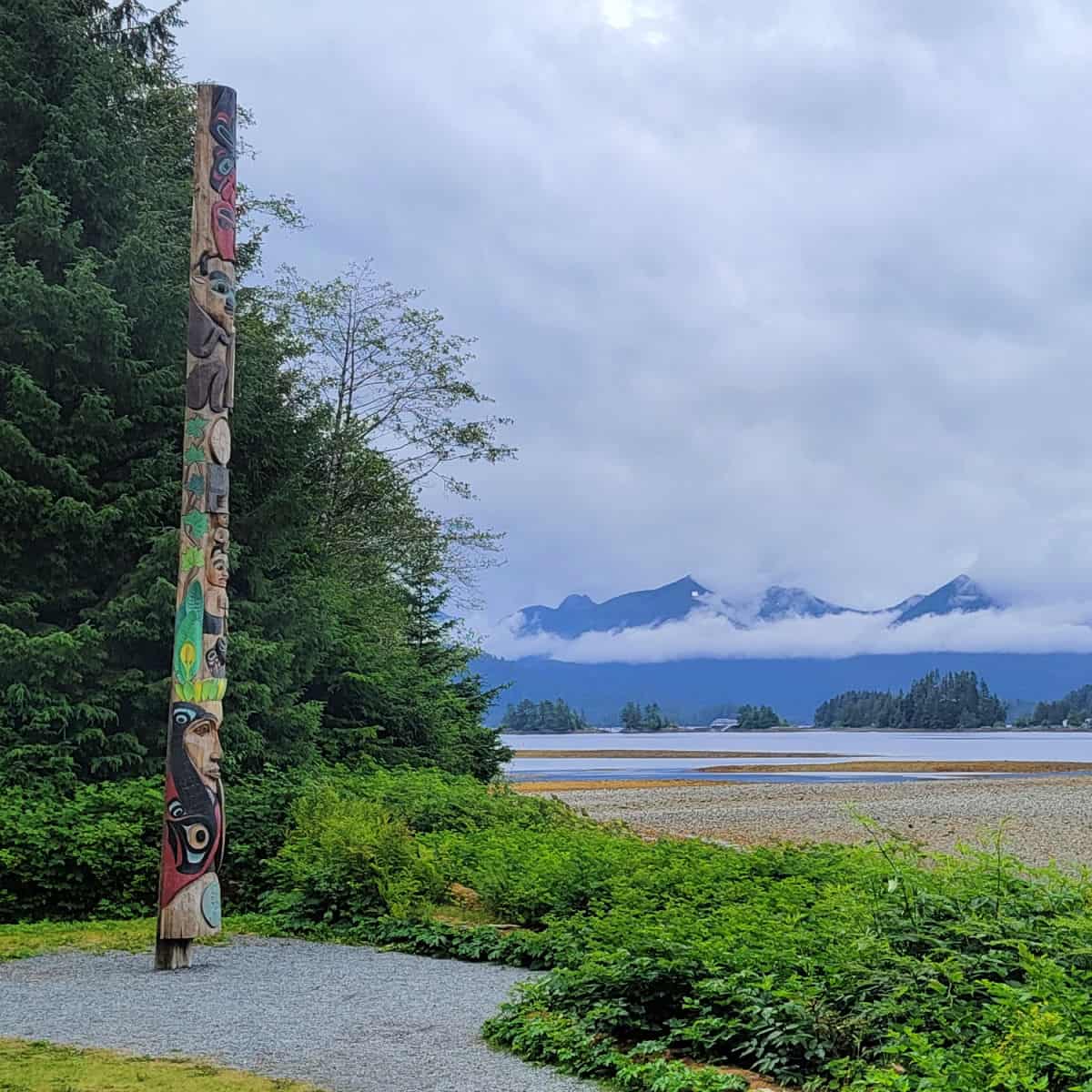
Sitka National Historical Park
Top Things to do - hiking, Totem poles walking tour, ranger-led Programs and fishing
Lodging - Sitka National Historical Park is a day-use area. There are several lodging options within walking distance, and many more just a short drive away including campgrounds, bed and breakfasts, and hotels.
Camping- There are no camping opportunities within Sitka NHP
Park Address - 103 Monastery St, Sitka, AK 99835
Sitka National Historical Park in Alaska is dedicated to preserving Tlingit Native American culture and the Russian-American colonial history. The park features totem poles that highlight Tlingit artistry, along with a visitor center offering exhibits on history and colonization.
Guided walks and programs provide insights into Tlingit customs and stories. Hiking trails wind through the coastal forest, connecting visitors with nature and cultural heritage.
The park's significance and accessibility make it an educational and serene destination in Sitka, with free admission inviting exploration of its historical and natural treasures.
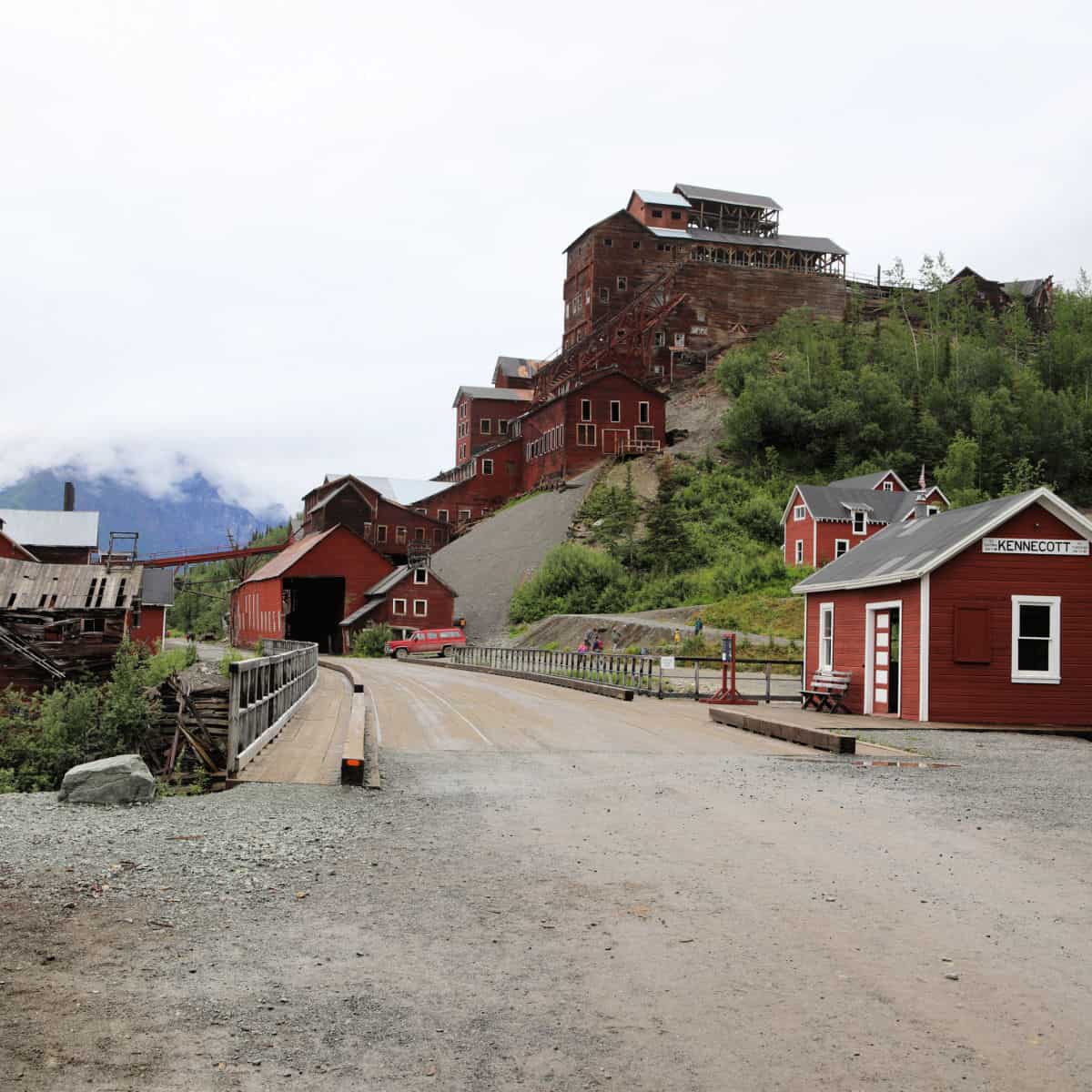
Wrangell-St. Elias National Park & Preserve
Top Things to do - backpacking/camping, hiking, wildlife viewing, floating and boating, hunting and fishing
Lodging - While there are no lodges or cabins directly within the park, there are private lodges, cabins, and accommodations available in nearby gateway communities such as McCarthy and Kennecott. These communities offer lodging options that cater to visitors exploring Wrangell-St. Elias.
Camping- The park has several designated campgrounds and camping areas, both in the national park and in the national preserve. These campgrounds are situated in different parts of the park, offering access to diverse landscapes and outdoor activities.
Park Address - Mile marker 106.8 Richardson Highway (Hwy 4)
Wrangell-St. Elias National Park, in the eastern part of south-central Alaska, is the largest national park in the state--and the nation--covering more than 13 million acres.
It contains numerous picturesque peaks, such as Mt. St. Elias, the nation's second tallest peak, and plenty of things to do. Paddle down one of the rivers for incredible views, sea kayak in the Gulf of Alaska, where you can see humpback whales, sea otters, sea lions and other types of wildlife or you can go mountain biking across the stunning terrain.
Hiking, fishing, and mountaineering are also popular within the park, which is about a day's drive from Anchorage. You can bring your own vehicle to get around in the park if you don't mind gravel roads.
Alternatively, arrange for an air taxi or arrive by boat via the Gulf. There are no lodges inside the park, so plan to camp or stay outside its borders. In winter temperatures can dip to -50 degrees Fahrenheit, but June and July, the warmest months, may even see a few 80-degree days.
Yukon-Charley Rivers National Preserve
Top Things to do - floating, fishing, dog mushing, visiting historic sites, and camping
Lodging - There is no lodging options within the preserve
Camping- Camping in Yukon-Charley Rivers National Preserve offers a backcountry experience, with no established campgrounds but opportunities to set up camp in undeveloped areas.
Yukon-Charley Rivers National Preserve in eastern Alaska spans 2.5 million acres of untamed wilderness along the Yukon and Charley Rivers. Renowned for its remote character, it preserves historical sites from the Klondike Gold Rush, offering insights into early prospectors' dreams.
The preserve's wild and scenic rivers provide opportunities for canoeing, kayaking, and fishing, while backcountry camping allows immersion in its diverse landscapes. With no visitor centers or developed facilities, planning is key for a visit, considering the area's extreme weather and minimal infrastructure. Yukon-Charley Rivers National Preserve offers a chance to experience a pristine wilderness intertwined with cultural history.
Park Address - 101 Dunkel St, Suite 110, Fairbanks 99701
This address is for the visitor information center.
List of National Parks in Alaska
Many of the Alaska National Parks include a park and a preserve. I have combined these onto the same line even though they count as two parks towards the 419 US National Parks.
- Alagnak Wild River
- Aniakchak National Monument & Preserve
- Bering Land Bridge National Preserve
- Cape Krusenstern National Monument
- Denali National Park & Preserve
- Gates of the Arctic National Park & Preserve
- Glacier Bay National Park & Preserve
- Katmai National Park & Preserve
- Kenai Fjords National Park
- Klondike Gold Rush National Historical Park (also Washington)
- Kobuk Valley National Park
- Lake Clark National Park & Preserve
- Noatak National Preserve
- Sitka National Historical Park
- Wrangell-St. Elias National Park & Preserve
- Yukon-Charley Rivers National Preserve
Affiliated Areas
- Aleutian World War II National Historic Area
- Alaska Public Lands
- Inupiat Heritage Center

There are 24 National Parks found in Alaska with over 2.9 million visitors each year. The National Park Service estimates that there are over $1.9 billion dollars in economic benefits from National Park Tourism in Alaska.
Alaska National Parks include 1 National Heritage Area, 13 wild and scenic rivers managed by the National Park Service, 430 National Register of Historic Places listings, 50 National Historic Landmarks, 16 National Natural Landmarks and 1 World Heritage Site (Wrangell St. Elias National Park).
There are 10 threatened or endangered species found in the Alaska Parks.
For an entire list of US National Parks head over to our list of US National Parks in Alphabetical Order. We also have a printable checklist of all 417 National Park properties in the United States available.
If you have dreamed of working in the National Parks make sure and check out our article on How to Become a Park Ranger. Working in the parks is one of the most amazing jobs you can find. There is just something special about waking up and knowing you are going to work in a beautiful park.
Alaska National Parks Tour
Kenai Fjords & Denali National Park 5 Day, 4 Night Tour - This tour is roundtrip from Anchorage and tour highlights include
- The Alaska Pioneer Mine Experience
- Tidewater Glaciers & Wildlife of Kenai Fjords National Park
- Wildlife of Denali such as grizzly bears, caribou, all sheep, moose & more
- Guests choose activities based on their intrests
- Visit the sled dogs of Denali
- Tour includes lunch, park entrance fees, tour transportation throughout, breakfast(4)
Click here to book your Kenai Fjords & Denali National Park 5 Day, 4 Night Tour.
Ultimate Alaskan Adventure: Ocean wildlife to interior wilderness 9 day, 8 night tour - This tour is roundtrip from Anchorage and visits Denali National Park, Kenai Fjords National Park, and Lake Clark National Park. This tour includes:
- Guaranteed to see Clark's famous brown bears
- Kayak in Kenai Fjords and spot wildlife in Denali
- Tour has a maximum of 12 travelers for a more personalized experience
- accommodations on days 1-8
- flight to/from Lake Clark National Park Area
- Airport pickup/dropoff in Anchorage
- Park entrance fees
- 8 breakfast, 2 lunch, 2 dinners included
Click here to book your Ultimate Alaskan Adventure: Ocean wildlife to interior wilderness 9 day, 8 night tour.
11 Day Grand Alaska Highlights Tour - Want to go camping and hiking through central Alaska? Tour includes stops at Denali National PArk, Valdez, and Wrangell St. Elias National Park. The Central interior of Alaska highlights some of the most condensed waterfalls, glaciers, national parks, and wildlife viewing you can see! This tour includes:
- An air-conditioned vehicle
- Expert and fun local tour guide
- Camping equipment (tent and foam sleeping pad) Just bring your own sleeping bag or rent one through the tour company
- Cooking equipment
- Glacier kayak excursion in Valdez (full-day)
- Accomodations for 10 nights including 8 camping nights and 2 lodge nights
- Breakfast(10), Lunch (11), Dinner (8). There is a local food kitty payment of $24.00/day to cover the 10 camp breakfasts, 7 camp dinnes, 11 lunches.
Click here to book your 11 Day Grand Alaska Highlights Tour.
National Park Travel Resources
Learn more about National Park Passes for parks that have an entrance fee.
$80.00 - For the America the Beautiful/National Park Pass. The pass covers entrance fees to all US National Park Sites and over 2,000 Federal Recreation Fee Sites for an entire year and covers everyone in the car for per-vehicle sites and up to 4 adults for per-person sites.
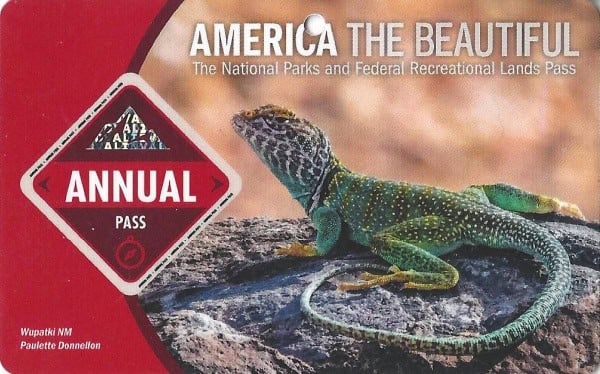
Buy your pass at this link, and REI will donate 10% of pass proceeds to the National Forest Foundation, National Park Foundation, and the U.S. Endowment for Forestry & Communities.
National Park Free Entrance Days -Mark your calendars with the five free entrance days the National Park Service offers annually.

For a fun adventure check out Escape Campervans. These campervans have built in beds, kitchen area with refrigerators, and more. You can have them fully set up with kitchen supplies, bedding, and other fun extras. They are painted with epic designs you can't miss!
Escape Campervans has offices in Vancouver, Seattle, Portland, San Francisco, Las Vegas, Los Angeles, Phoenix, Salt Lake City, Denver, New York, and Orlando
Resources:
Alaska National Parks on the National Park Website
National Geographic Guide to Alaska parks Book
Fodor's Alaska Guide Book
Check out our post on Cruising to Alaska's National Parks
Make sure to follow Park Ranger John on Facebook, Instagram, Pinterest, and TikTok

